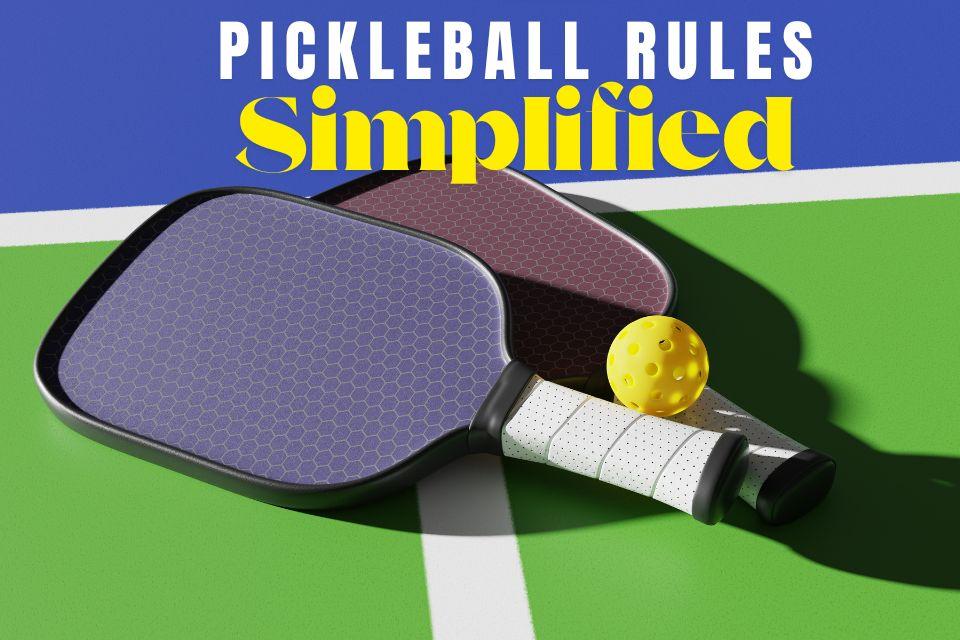


Pickleball is one of the fastest-growing sports worldwide, combining the best elements of tennis, badminton, and table tennis into a fun and accessible game. If you’re new to Pickleball, understanding the rules might feel overwhelming at first, but don’t worry, this guide breaks down the essential rules in simple terms to help you start playing confidently and like a pro.
What Is Pickleball?
Before diving into the rules, here’s a quick recap: Pickleball is played with paddles and a plastic ball on a court smaller than tennis. It can be played in singles or doubles, with the goal to score points by legally hitting the ball over the net and into your opponent’s court.
The Court and Setup
Court Size: The court is 20 feet wide and 44 feet long — the same for singles and doubles.
Net Height: The net is 36 inches high at the sidelines and 34 inches in the center.
Non-Volley Zone (Kitchen): The 7-foot area on each side of the net where volleys (hitting the ball before it bounces) are not allowed.
Starting the Game — The Serve
The serve must be made underhand, with the paddle contacting the ball below the waist.
You serve diagonally to the opponent’s service court.
The server must keep both feet behind the baseline.
Only one serve attempt is allowed, except in the case of a let (ball touches the net but lands in the correct service area).
Scoring Rules
Only the serving team can score points.
Games are typically played to 11 points, and a team must win by at least 2 points.
In doubles, the score is called with three numbers: server’s score, receiver’s score, and server number (1 or 2).
The Double-Bounce Rule
After the serve, each team must let the ball bounce once before volleying.
This means the receiving team lets it bounce once, then the serving team lets it bounce once before volleys can happen.
This rule slows the game down and encourages longer rallies.
Non-Volley Zone (Kitchen) Rules
Players cannot volley (hit the ball in the air) while standing inside the non-volley zone.
You can enter the kitchen to play a ball that has bounced but must exit before volleying again.
This prevents players from dominating the net with aggressive volleys.
Faults — When You Lose a Point or Serve
A fault occurs when:
The ball is hit out of bounds.
The ball doesn’t clear the net.
Volleying inside the non-volley zone.
Violating the double-bounce rule.
Stepping into the non-volley zone while volleying.
Serving faults (wrong service motion or position).
Doubles Play Specifics
The first serve of the game is made by only one player.
After a fault, the second player on the team serves.
Both players get to serve before the serve switches to the opposing team.
Tips to Remember When Playing
Focus on consistent serves into the correct service box.
Use the double-bounce rule to build longer rallies.
Stay out of the kitchen unless the ball bounces there.
Communicate well with your doubles partner.
Why Understanding Rules Matters
Knowing the rules inside out not only helps you play fairly but also improves your strategy and confidence on the court. It reduces mistakes, speeds up gameplay, and makes matches more enjoyable for everyone.
Where to Learn and Practice
Join local Pickleball clubs or community centers.
Watch beginner-friendly tutorials online.
Practice drills focusing on serving, volleying, and footwork.
Equip yourself with the right gear like paddles and balls from trusted brands.
For a full beginner’s guide on getting started with Pickleball, including gear recommendations, check out our blog: Pickleball 101: How to Get Started with the Fastest-Growing Sport in India.
Final Thoughts
Pickleball’s simple yet engaging rules make it a perfect sport for players of all ages and skill levels. Once you grasp the basics, you’ll be ready to hit the court and enjoy this exciting game with friends and family.
Gear up with quality Pickleball equipment from SportsGear24*7 and play like a pro from day one!